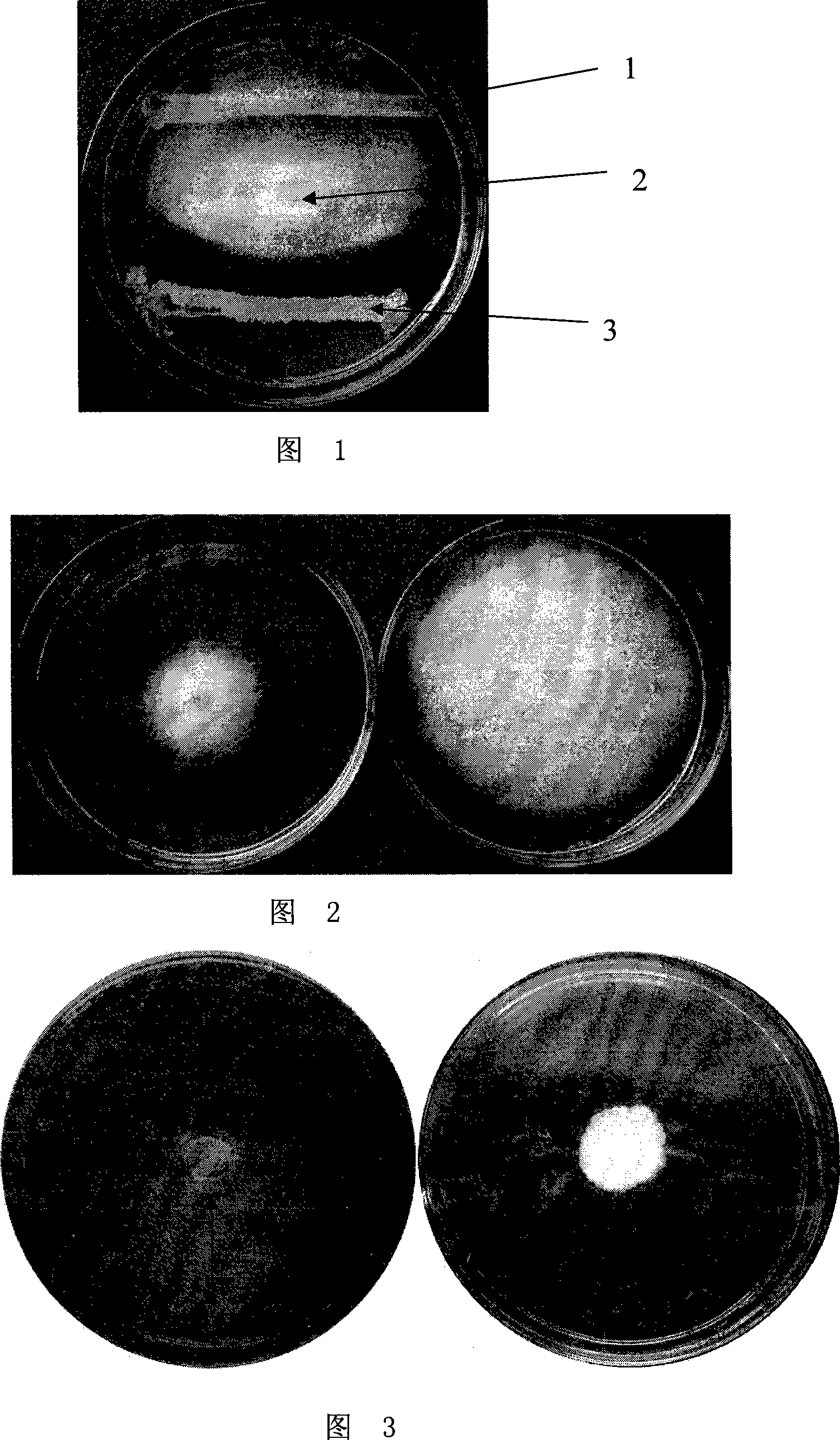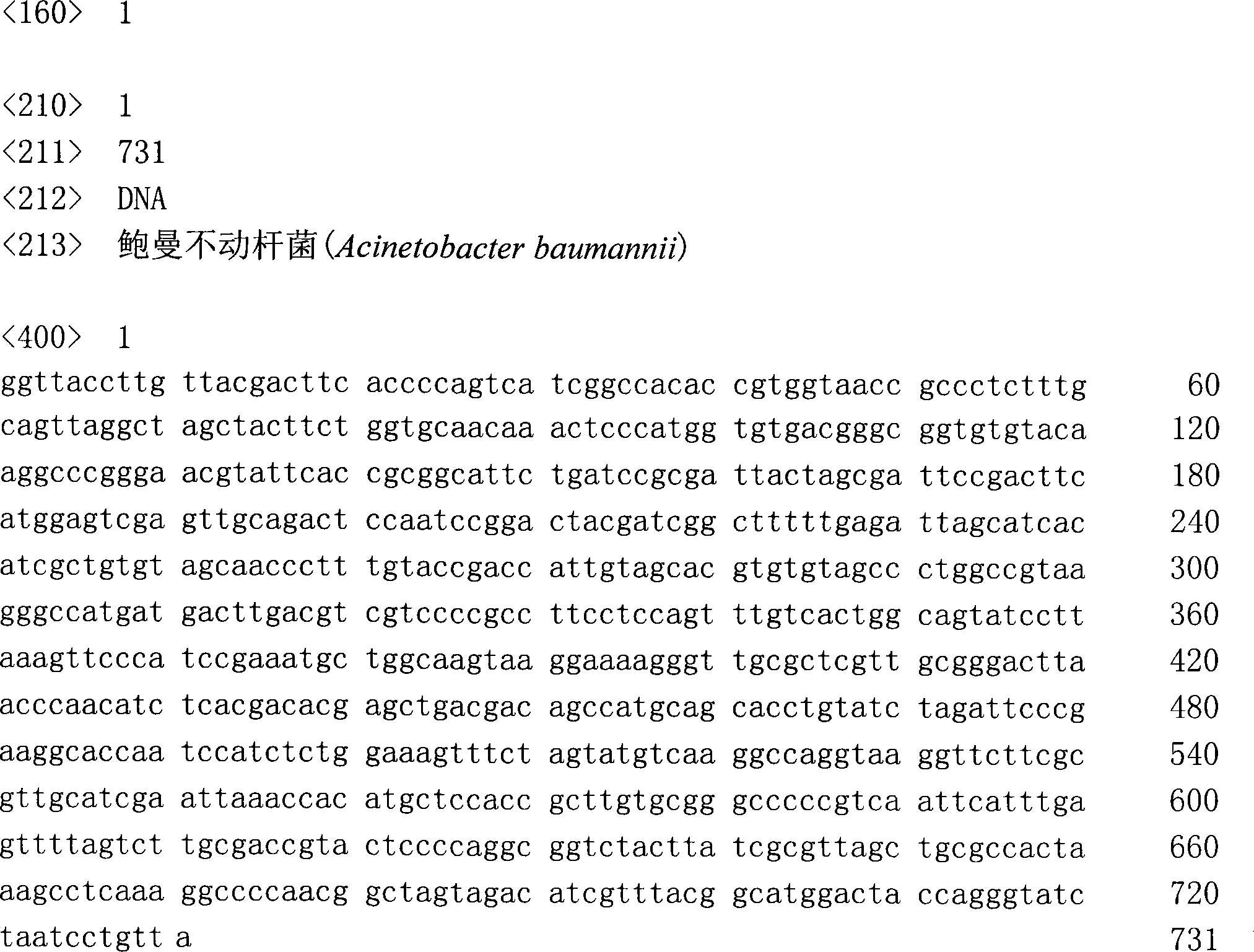Plant pathogenic fungi antagonistic bacteria capable of generating siderophore and uses thereof
A technology for plant pathogenic bacteria and plant diseases, applied in the field of plant disease prevention and control, can solve problems affecting banana quality and export price, fruit quality, pesticide residues, etc.
- Summary
- Abstract
- Description
- Claims
- Application Information
AI Technical Summary
Problems solved by technology
Method used
Image
Examples
Embodiment 1
[0019] Embodiment 1, screening and identification of phytopathogenic fungus antagonistic bacteria
[0020] 1. Screening of antagonistic bacteria of plant pathogenic fungi
[0021] This strain is isolated from healthy banana plants in Ledong County, Hainan, my country. The specific method is: Weigh 1g of healthy banana plant tissue, after surface disinfection, put it into a sterile mortar with 10mL of sterile water, add a little sterilized Grind the bacterium's quartz sand evenly and let it stand for 15 minutes. Take 1mL and dilute to 10 -3 、10 -4 、10 -5 Concentration gradient, take 0.1mL from each concentration gradient suspension, and spread it on NA medium with a sterile applicator (the formula is: 5g of peptone per liter, 1g of yeast extract, 3g of beef extract, 10g of agar powder, 10g of sucrose , pH 7.0-7.2) on the plate, and the sterile water that washed the sample last time was used as the control. Inverted culture at 28°C, observed continuously for 7 days, picked s...
Embodiment 2
[0043] Example 2, detection of siderophores produced by Acinetobacter baumannii (Acinetobacter baumannii) BEB3 CGMCC No.2244
[0044] Some microorganisms are able to produce a special kind of organic compound that can bind iron, called siderophore. Its main group is a derivative of hydroxamic acid or catechol, which can firmly bind to ferric iron, dissolve ferric iron and transport iron into cells.
[0045] Detect the siderophore ability of Acinetobacter baumannii (Acinetobacter baumannii) BEB3CGMCC No.2244 of the present invention by following experiment
[0046] 1. Preparation of siderophore medium plates (containers and utensils used in the configuration process must be soaked in 6N HCl solution and rinsed with double distilled water):
[0047] 1) First prepare 10×MM9 medium (formula: 3 g of potassium dihydrogen phosphate, 5 g of sodium chloride, 10 g of ammonium chloride, 1000 ml of double distilled water), and autoclave at 121° C. for 20 minutes.
[0048] 2) Add 6ml of ...
Embodiment 3
[0055] Example 3, Antagonism effect experiment of Acinetobacter baumannii (Acinetobacter baumannii) BEB3 CGMCC No.2244 on pathogenic fungi
[0056] Take Acinetobacter baumannii (Acinetobacter baumannii) BEB3CGMCC No.2244 cultured in NB medium (28°C, shaker for 24 hours, OD 600Value is about 2.5) 2mL into 15mL PDA medium cooled to about 45°C, shake gently to mix the Acinetobacter baumannii (Acinetobacterbaumannii) BEB3 bacteria solution with the medium, and pour into a 9cm diameter petri dish In the middle, cool down and make flat plate, the test pathogenic bacterium bacterium block of diameter 5mm (banana fusarium wilt (purchased from China Agricultural Microorganism Culture Collection Management Center, preservation number ACCC No.31272), banana anthracnose bacterium (purchased from China Agricultural Microbiology Strain Preservation Management Center, preservation number ACCC No.31247), rice blast fungus (purchased from China Agricultural Microorganism Strain Preservation Ma...
PUM
 Login to View More
Login to View More Abstract
Description
Claims
Application Information
 Login to View More
Login to View More - R&D
- Intellectual Property
- Life Sciences
- Materials
- Tech Scout
- Unparalleled Data Quality
- Higher Quality Content
- 60% Fewer Hallucinations
Browse by: Latest US Patents, China's latest patents, Technical Efficacy Thesaurus, Application Domain, Technology Topic, Popular Technical Reports.
© 2025 PatSnap. All rights reserved.Legal|Privacy policy|Modern Slavery Act Transparency Statement|Sitemap|About US| Contact US: help@patsnap.com


